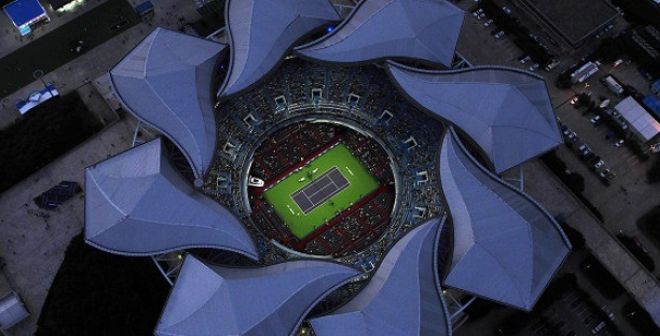Today begins the business end of the Madrid Masters 1000. My sporting analysis up to now and for the rest of the week : Vamos Rafa !
As you can tell, I have absolutely no intention on spending time talking about the sporting aspect of the tournament. I want to concentrate on something else today. A detail that is all but ignorable in this tournament : video officiating.
The tennis aficionados that you are, of course noticed that I did not use the name Hawkeye. The English company, of which the name has almost become a general term to designate electronic officiating, is not the only one to operate on the tour. Its Spanish counterpart, Foxtenn, is also present on around 30 events (ATP, WTA and ITF).
Rio ATP 2020 tournament was the first on clay to benefit from video officiating
I don’t want to get into too many technical details, so to make a long story (very) short, Hawkeye’s technology works with cameras placed in the « gods » whereas Foxtenn’s are at court level. The latter produces a « real bounce » image, versus an « estimation » for Hawkeye. But let’s not enter the dull communications war between the two companies. There are two technologies that co-exist on the tours.
The novelty is that this week, the technology is being put to use on clay which is, not a first, but remains very rare. The Rio ATP 2020 tournament was the first on clay to benefit from video officiating, followed by this year’s WTA event in Charleston.
Proven to be effective, the decision was made to deploy the technology at a 1000 event which is something else in terms of exposure compared to a south American tournament, which remains slightly confidential.
I can already hear you asking the question : « Why use video officiating when one can check the mark? ». True. And in fact, the rush down the chair to show the mark is part of the clay court tennis traditions and sometimes allow for some unexpected entertainment, such as my friends exploits, Renaud Lichtenstein (excellent chair umpire), on court Philippe-Chatrier.
Always a great scene to re-watch. I love the « merci » at the end which says a lot about his state of mind after having literally wiped out in front of not 15 000 fans but millions of tv viewers around the planet.
Fernando Gonzalez had also gone a bit mad
Having said that, although it is almost always visible, under the condition of choosing the right one (Robin Soderlingif you’re reading …)
It is not always clear to know whether the ball is indeed in or out. How many times have players had melt downs while inspecting the mark with the umpire and totally disagreeing with their interpretation.
Remember Viktor Troicki’s epic loss of cool in Rome.
At Roland-Garros, Fernando Gonzalez had also gone a bit mad after a conflictual read of a ball mark.
Or recently, of course, Benoit Paire in Buenos Aires.
And there are many other examples.
So yes, and I’m sorry for you conservatives, but video officiating on clay is a must, I’d even say : It’s about time ! However what I don’t like in the case of the Madrid Masters 1000, is the fact that the technology is only available on court Manolo Santana. There is therefore a double standard, which is not acceptable.













